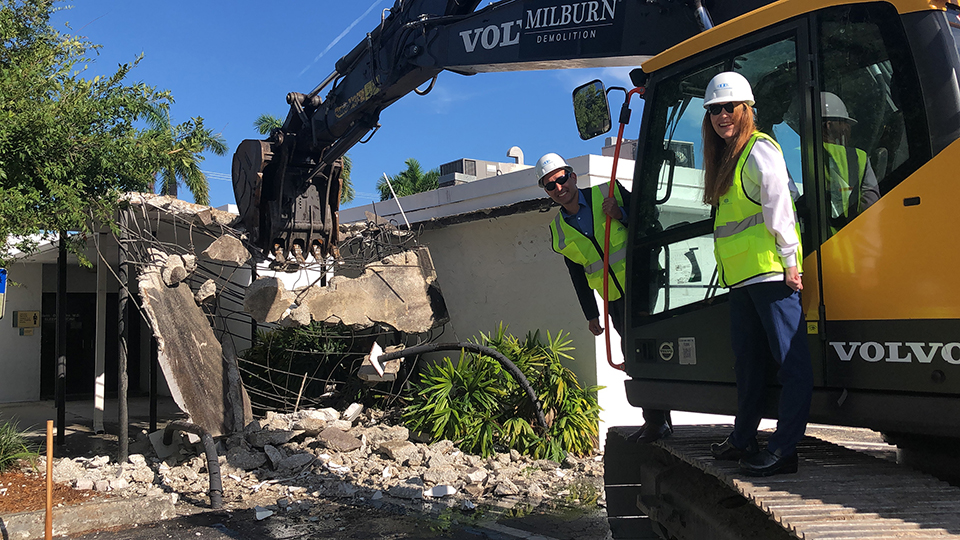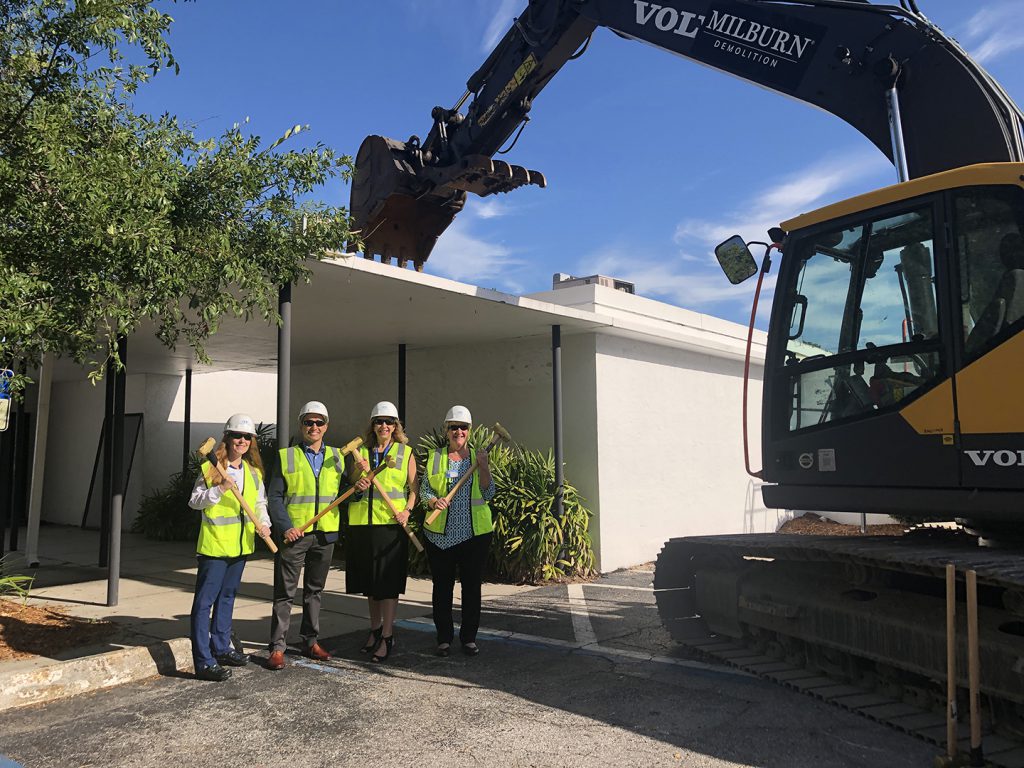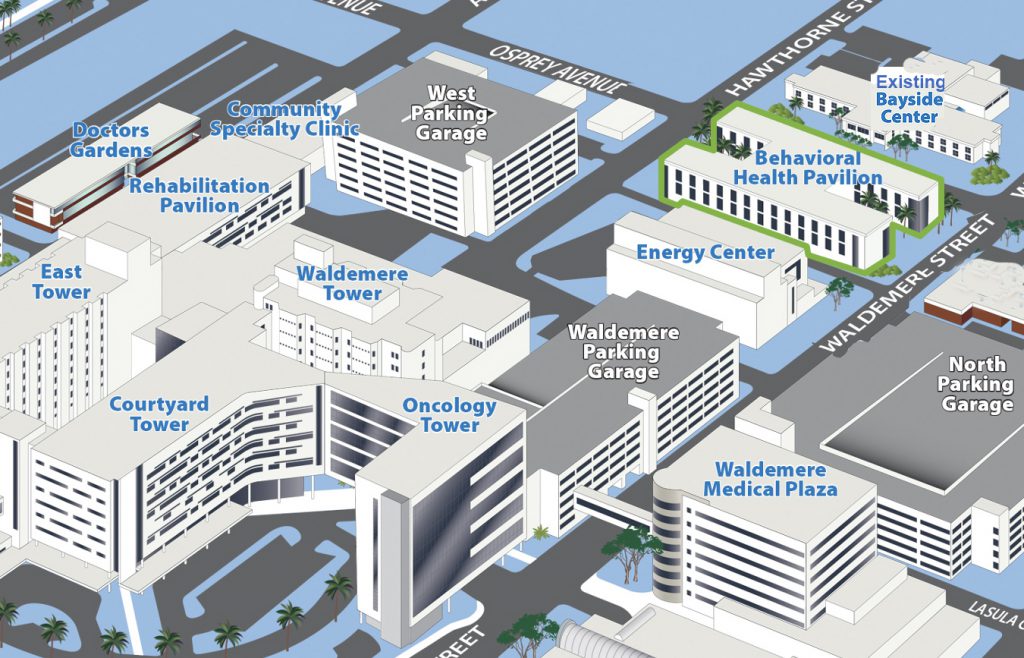
Path Clears for New Era in Behavioral Health Care
Demolition of the old Bayside East office building has begun, making way for a new Behavioral Health Pavilion
SMH is moving forward with plans to replace its aging behavioral health hospital with a new, state-of-the-art pavilion that centralizes and enhances behavioral and mental health care.
The new 82-bed Behavioral Health Pavilion will be constructed on the site of the 1960s-era Bayside East office building, located on the southeast corner of Osprey Avenue and Waldemere Street.
Last week, construction crews began tearing down Bayside East to make way for the new pavilion.

Construction on the new facility is expected to begin early next year and wrap up in 2023. When complete, the new Behavioral Health Pavilion will have four inpatient areas with all private rooms designed to meet the unique needs of different patient populations, including a geriatric unit, an acute care unit, an adult unit and a child/adolescent unit.
A separate outpatient area in the pavilion will centralize the hospital’s existing partial hospitalization program, intensive outpatient program, electroconvulsive therapy (ECT) and outpatient counseling services into one location.
Planning and design of the new facility is now under way.
The existing Bayside Center for Behavioral Health hospital on the west side of Osprey Avenue will remain open until the pavilion is finished.

In addition to moving forward with the exciting plans for their new facility, the Behavioral Health team also recently recognized Mental Health Awareness Month (in May), and shared the following facts, figures and tips to keep in mind year-round:
Mental Health Facts & Figure (Source: Mentalhealth.gov):
• Nearly 450 million people worldwide are currently living with a mental illness, yet nearly two thirds of them never seek treatment.
• 1 in 5 U.S. adults experience mental illness each year, and 1 in 20 experience serious mental illness annually.
• 1 in 6 U.S. youths aged 6-17 experience a mental health disorder each year.
• 50% of all lifetime mental illness begins by age 14, and 75% by age 24.
• Suicide is the second leading cause of death among people aged 10-34.
Experts say the COVID-19 pandemic has had a profound impact on the mental health of people of all ages, and exacerbated these trends. They estimate that more than 50% of people in the U.S. have experienced depression, anxiety, anger and post-traumatic stress disorder (PTSD) since the onset of the health crisis.
The Behavioral Health team says it’s more critical than ever to reduce the stigma around mental health struggles, because stigma often prevents people from seeking help.
Here’s what you can do to raise awareness:
• Be aware of your language and attitude: Reflect on your own personal beliefs regarding mental illness. See if you can identify any areas where you may be contributing to the stigma.
• Encourage equality between mental and physical illness:
Help people understand that having a mental illness requires the same consideration and need for treatment as someone with a medical illness.
• Talk about your experience: Just about everyone knows someone that has struggled with mental illness or addiction. The more people that share their personal experiences, the more people will realize they are not alone with their illness. The goal of sharing should be to let people know that they are not alone and that there is hope.
• Learn about mental health/illness: Practice good self-care habits to protect your own mental wellness. Learn about mental illness, the signs and the symptoms. This will help build empathy and understanding for those that are struggling.
Ways to maintain positive mental health include:
• Getting professional help when you need it
• Connecting with others
• Staying positive
• Getting physically active
• Helping others
• Getting enough sleep
• Developing healthy coping skills
